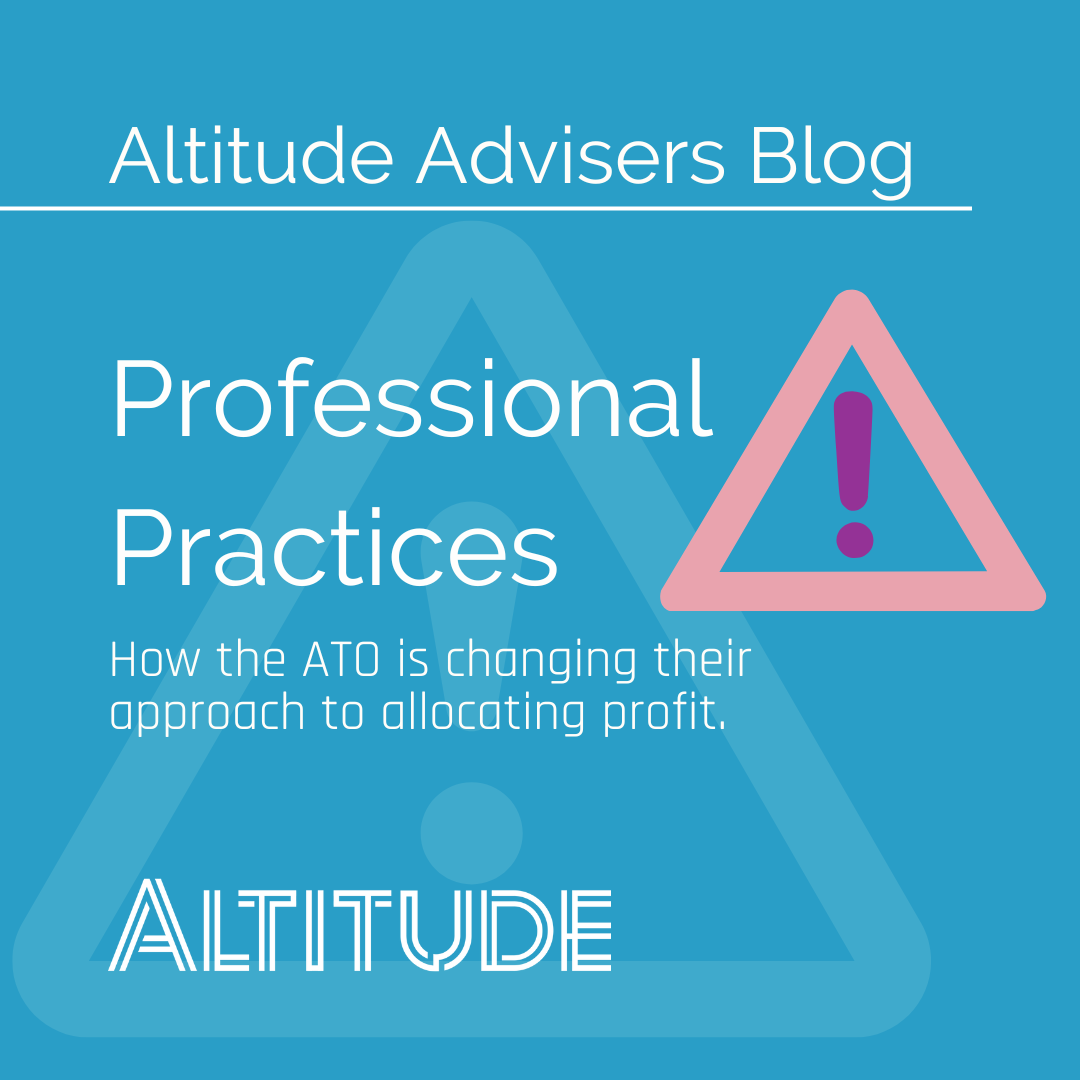
The ATO has a new approach to profit allocations, auditing or reviewing the tax rates of business partners.
What is going on?
The ATO has released practical guidance for professional services firms that details their approach to reviewing the allocation of profits and income tax paid by the owners and their family group.
Who does it apply to?
“Practical Compliance Guidance 2021/4 – Allocation of professional firm profits (PCG)” focuses on individual professional practitioners’ (IPPs) in a range of professions including (but not limited to) engineers, architects, medical practitioners, consultants, accountants, and lawyers.
IPPs are partner level persons who hold equity in the practice (either personally or via a related party such as family trust or spouse). It does not matter if the person is titled as a partner, principle, director, or otherwise.
The primary issue of concern is when the IPPs are incorrectly representing their taxable income with the value of the services they provide. Instead, profit distributions are being made to an associated entity and a tax benefit is being obtained.
ATO reviews will be expected for those professional firms who are pursuing aggressive tax planning strategies.
Previously, ATO reviews of IPP’s were based more commercial rationale and high-risk features of the profit allocation. Under the new PCG, the ATO takes a far more financial approach to the risk assessment based on information reported in tax returns of the professional practice, the IPP and other associated beneficiaries.
This allows the ATO to automate their risk review across all professional practices and not just those that the ATO may select for review periodically.
How are the ATO assessing risk factors (Table 1 in Tax Institute)?
As an IPP you can self-assess your risk level against each of the risk factors in the following table:
Total effective tax rate
| Risk assessment factor | Score 1 | Score 2 | Score 3 | Score 4 | Score 5 | Score 6 |
|---|---|---|---|---|---|---|
| Factor 1: Proportion of profit entitlement from the whole of firm group returned in the hands of the IPP. | More than 90% | More than 75% to 90%, inclusive | More than 60% to 75%, inclusive | 50% or more to 60%, inclusive | More than 25% to less than 50% | 25% or less |
| Factor 2: Total effective tax rate for income received from the firm by the IPP and associated entities. | More than 40% | More than 35% to 40%, inclusive | 30% or more to 35%, inclusive | More than 25% to less than 30% | More than 20% to 25%, inclusive | 20% or less |
| Factor 3: Remuneration returned in the hands of the IPP as a percentage of the commercial benchmark for the services provided to the firm. | More than 200% | More than 150% to 200%, inclusive | More than 100% to 150%, inclusive | More than 90% to 100%, inclusive | More than 70% to 90%, inclusive | 70% or less |
Total effective tax rate is the average rate of tax for the entire income received from the firm by the IPP expressed as a percentage. Calculate it using the following formula:
Total tax paid by the IPP, and associated entities of the IPP, on professional firm income ÷ Total firm income collectively received × 100.
What is my risk?
Now that you have had a look at the above table you should be able to assess your risk zone. The ATO has identified three levels of risk which they have named green, amber, and red.
If the IPP’s profit allocation is deemed to be of either a high or moderate risk the ATO will further analyse the arrangement.
You can use your total score on the above table to work out your risk zone and check it against the risk assessment framework to see what the ATO will recognise you as.
| Risk zone | Risk level | Aggregate score against first 2 factors | Aggregate of all 3 factors |
|---|---|---|---|
| Green | Low risk | 7 or less | 10 or less |
| Amber | Moderate risk | 8 | 11 and 12 |
| Red | High risk | 9 or more | 13 or more |
These new guidelines will not come into effect for your business until 30 June 2024. If your company is deemed to be low-risk, you have nothing to worry about.
Is your company deemed high risk? Do you need help understanding the changes to the PCG and how you can ensure the ATO doesn’t come knocking at your door? If you answered yes to any of those questions, the team at Altitude can help.


